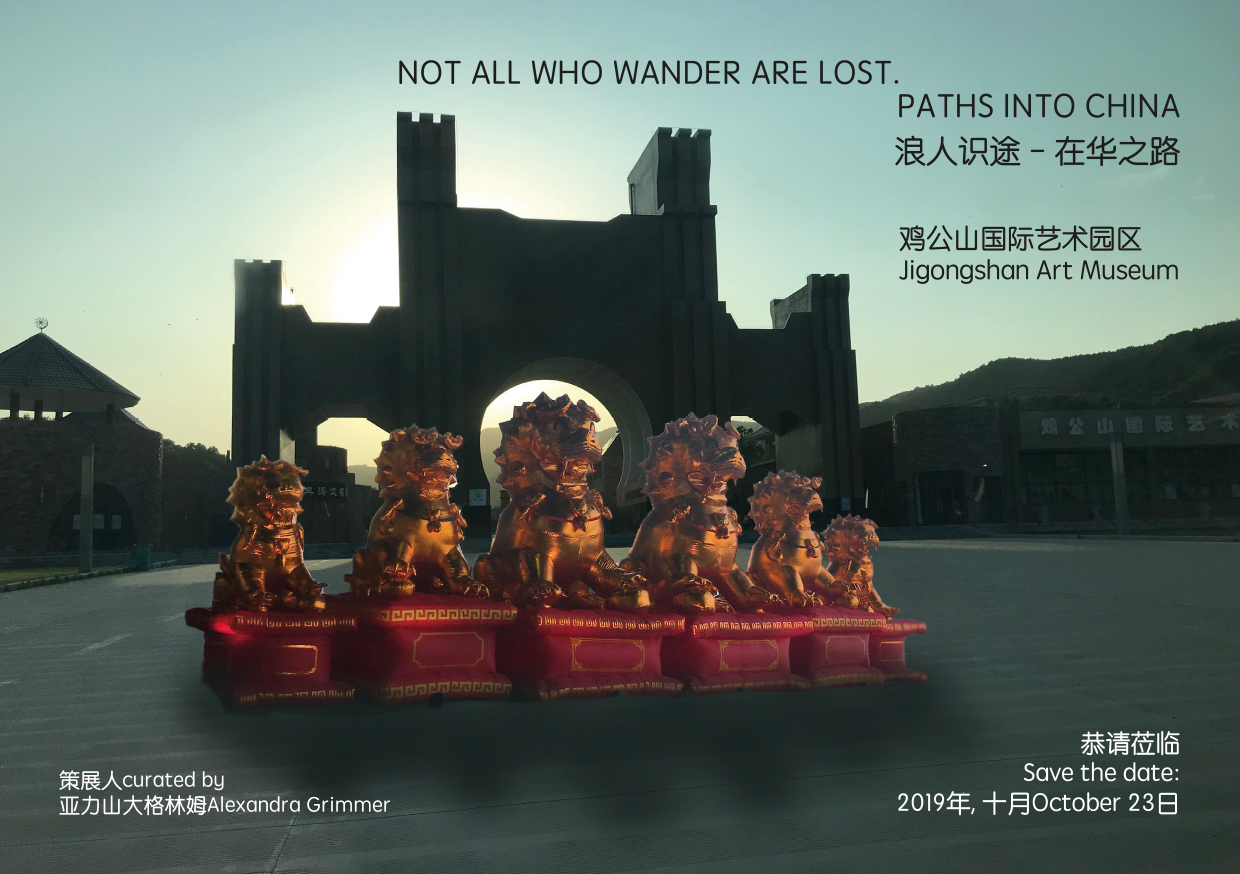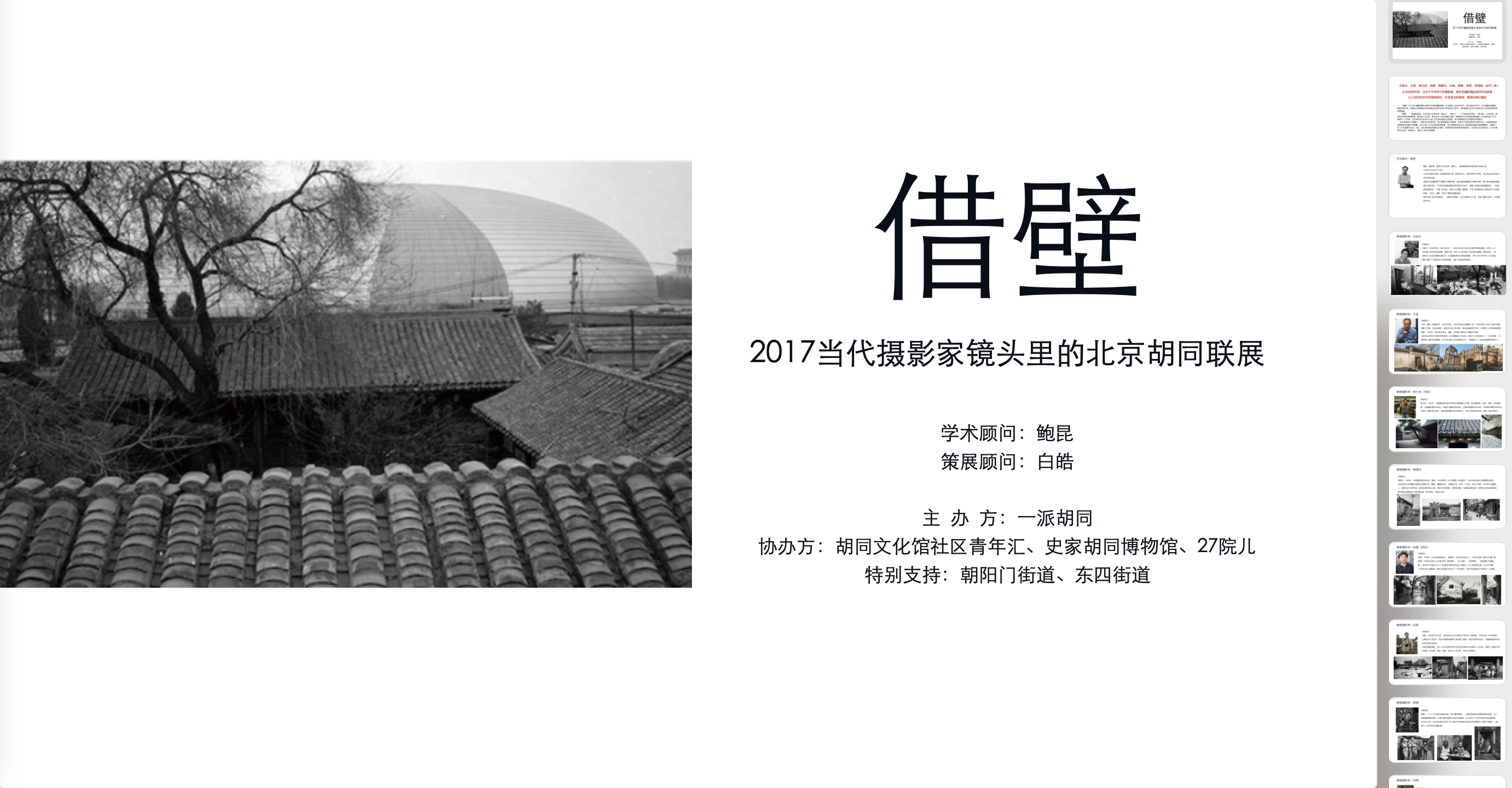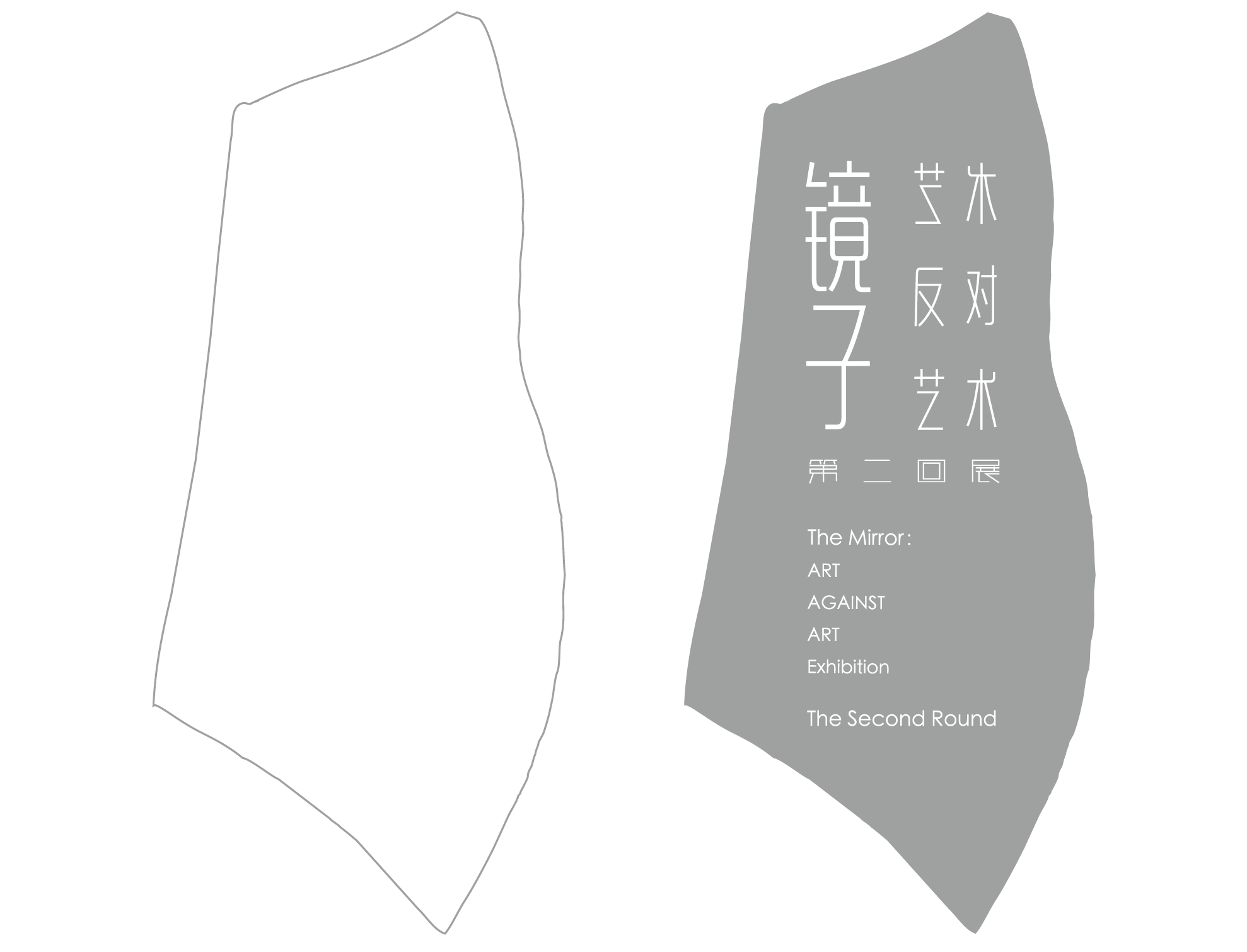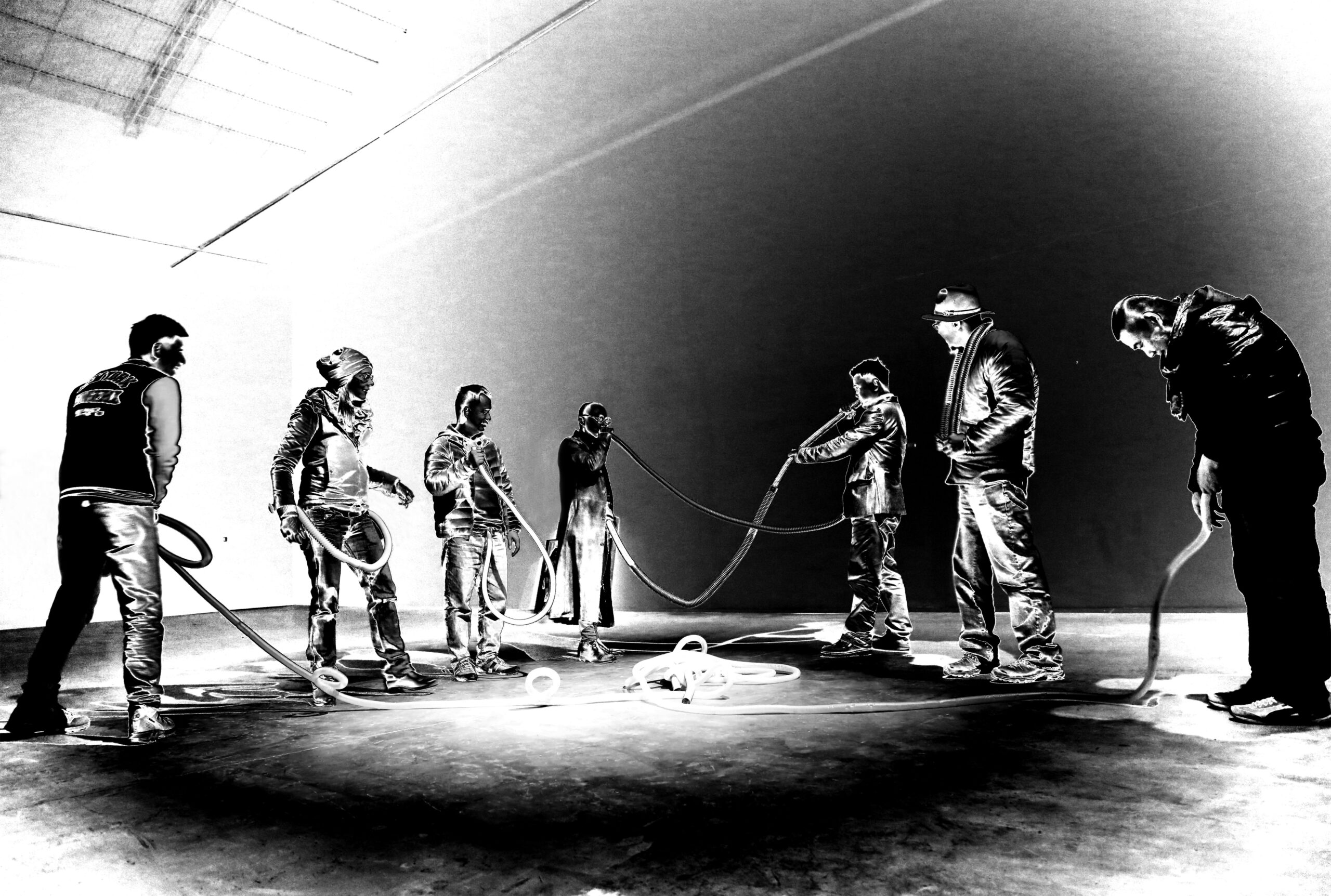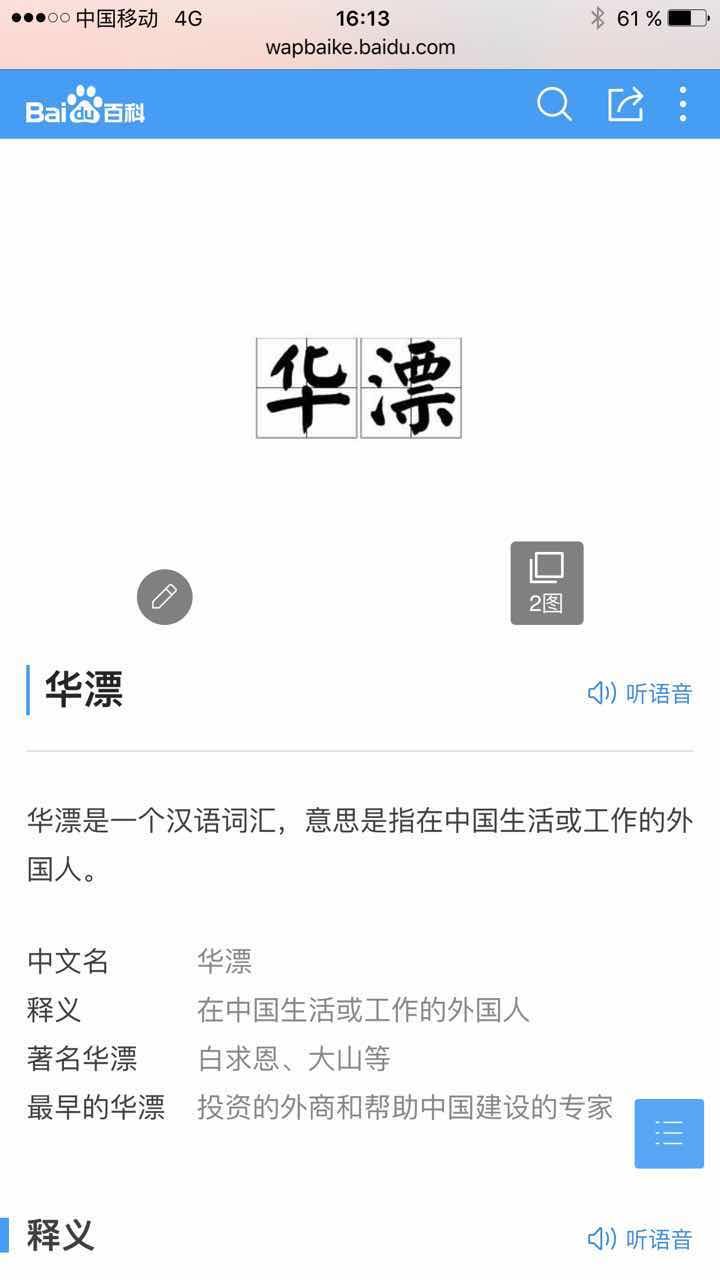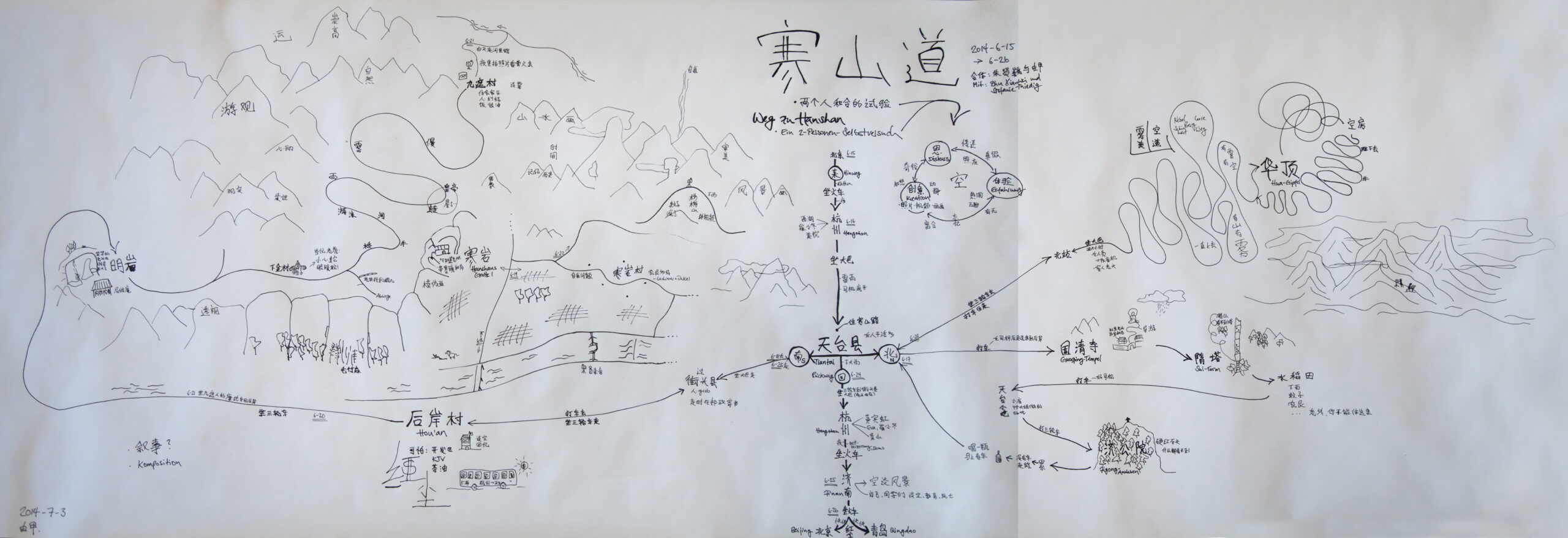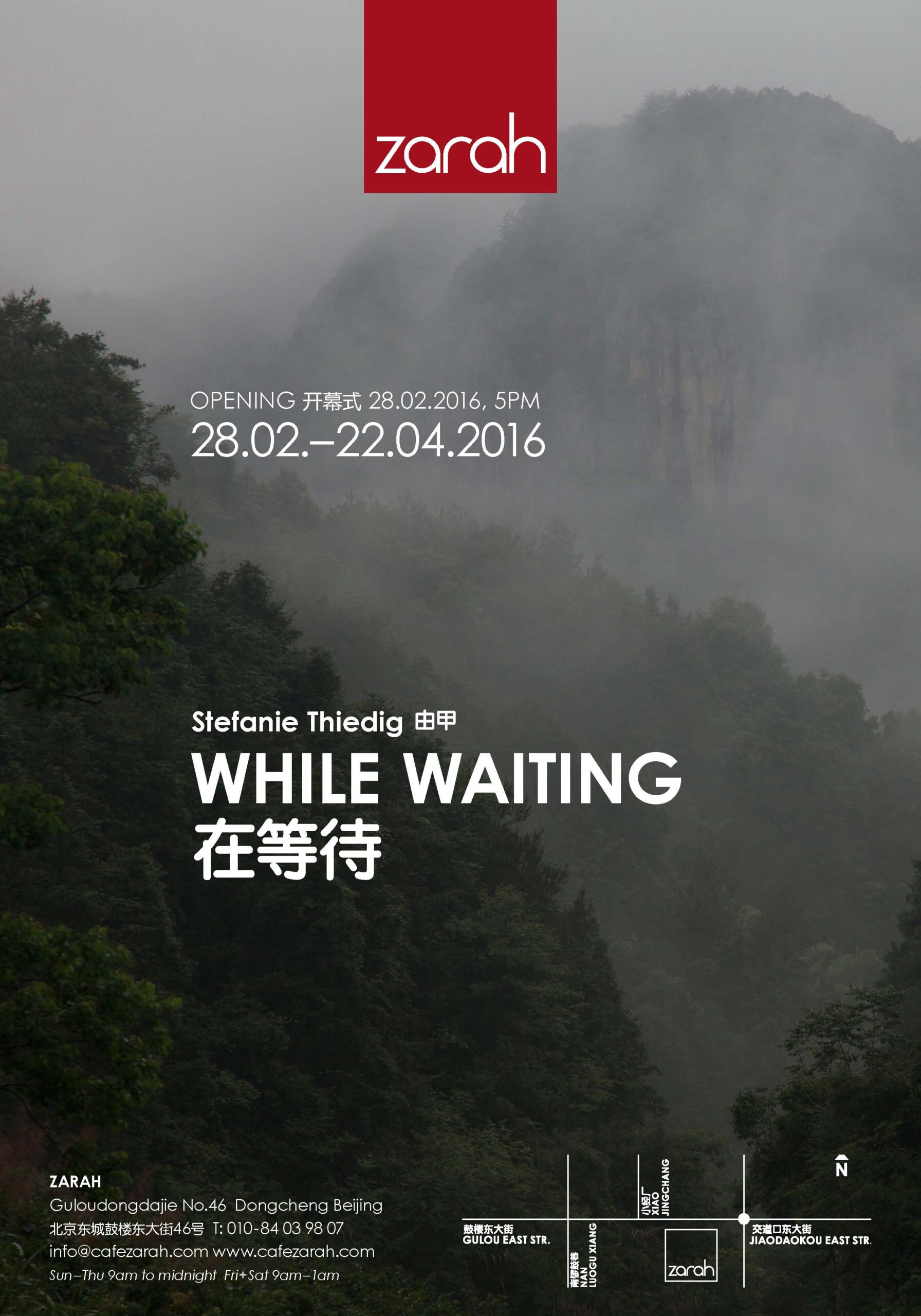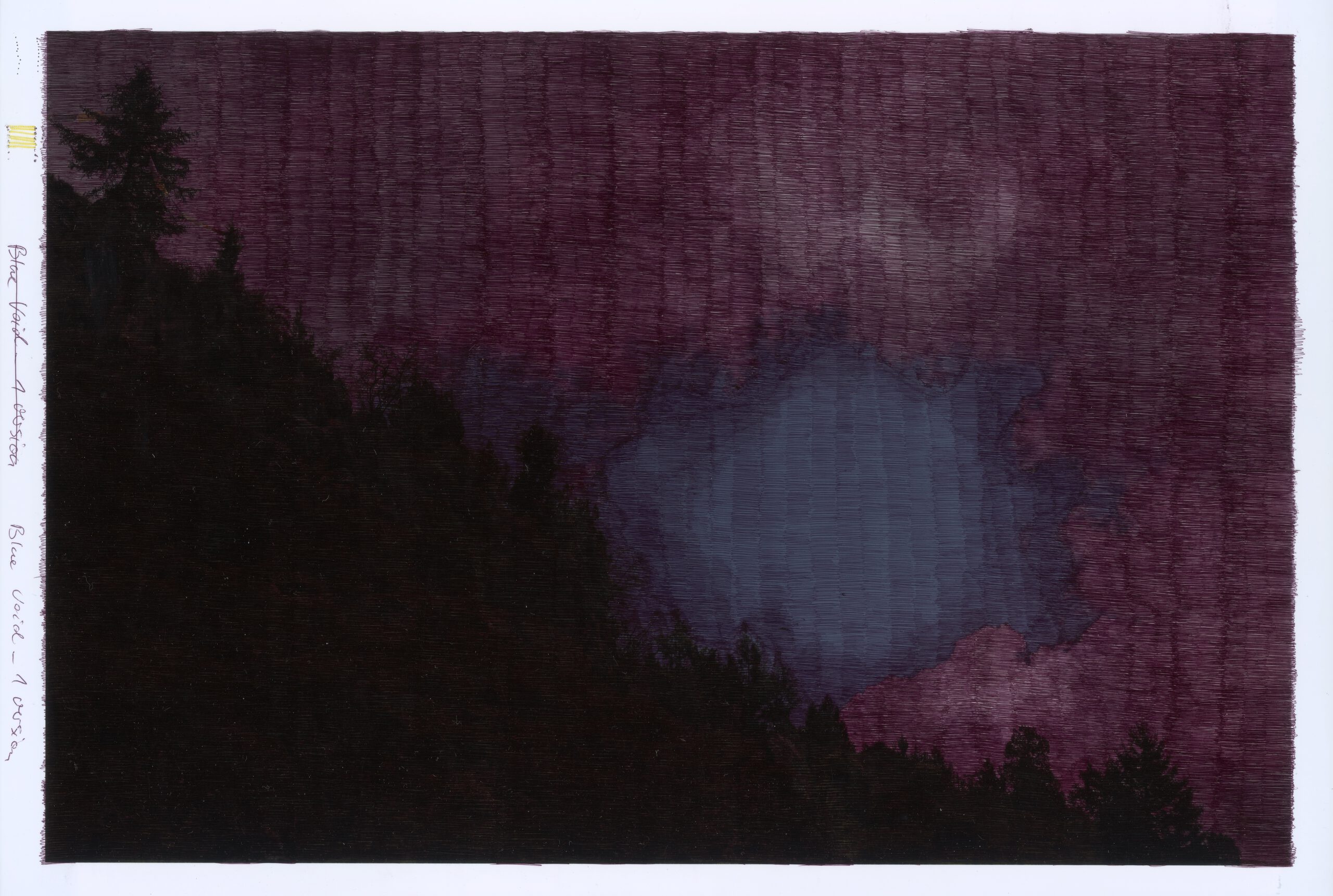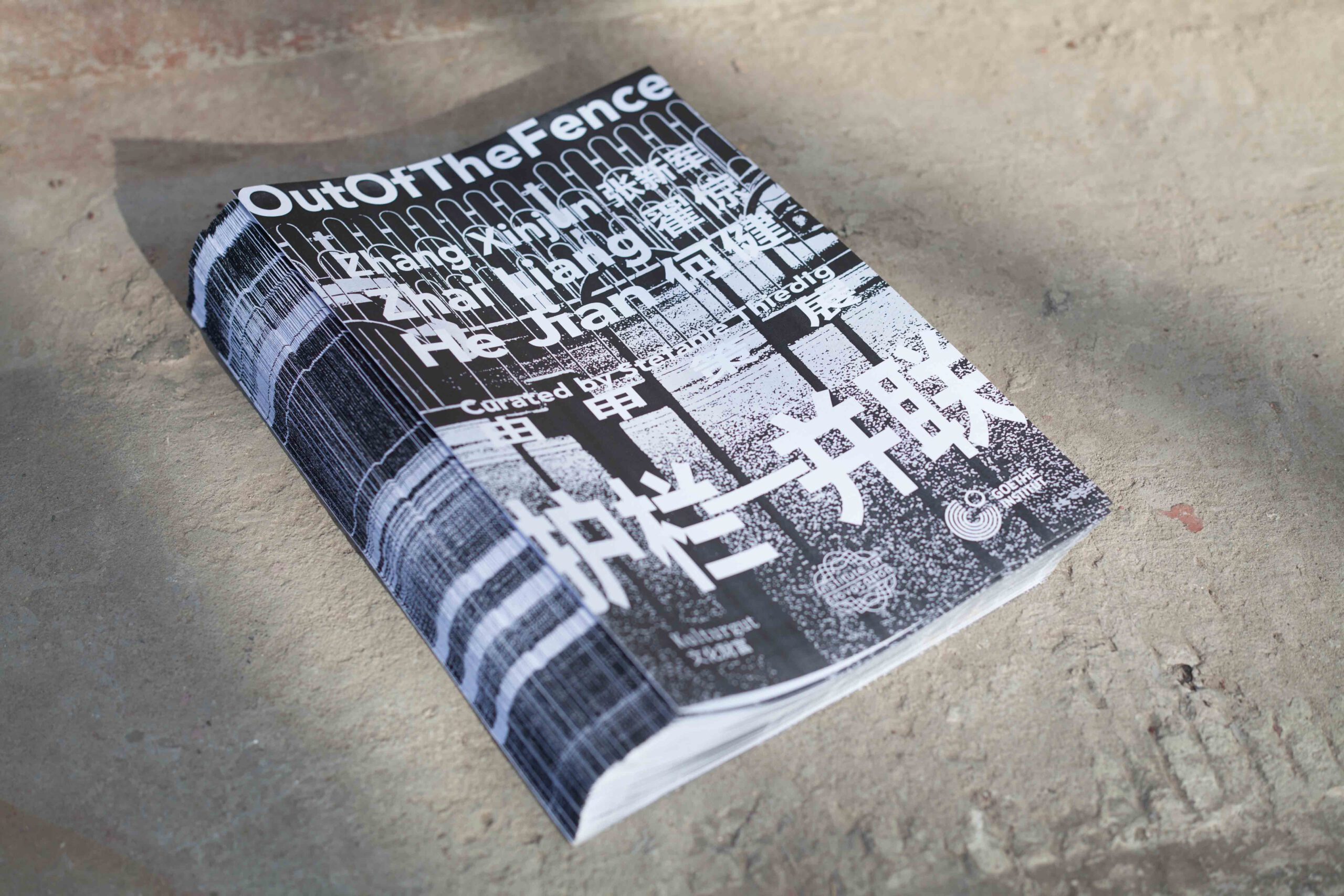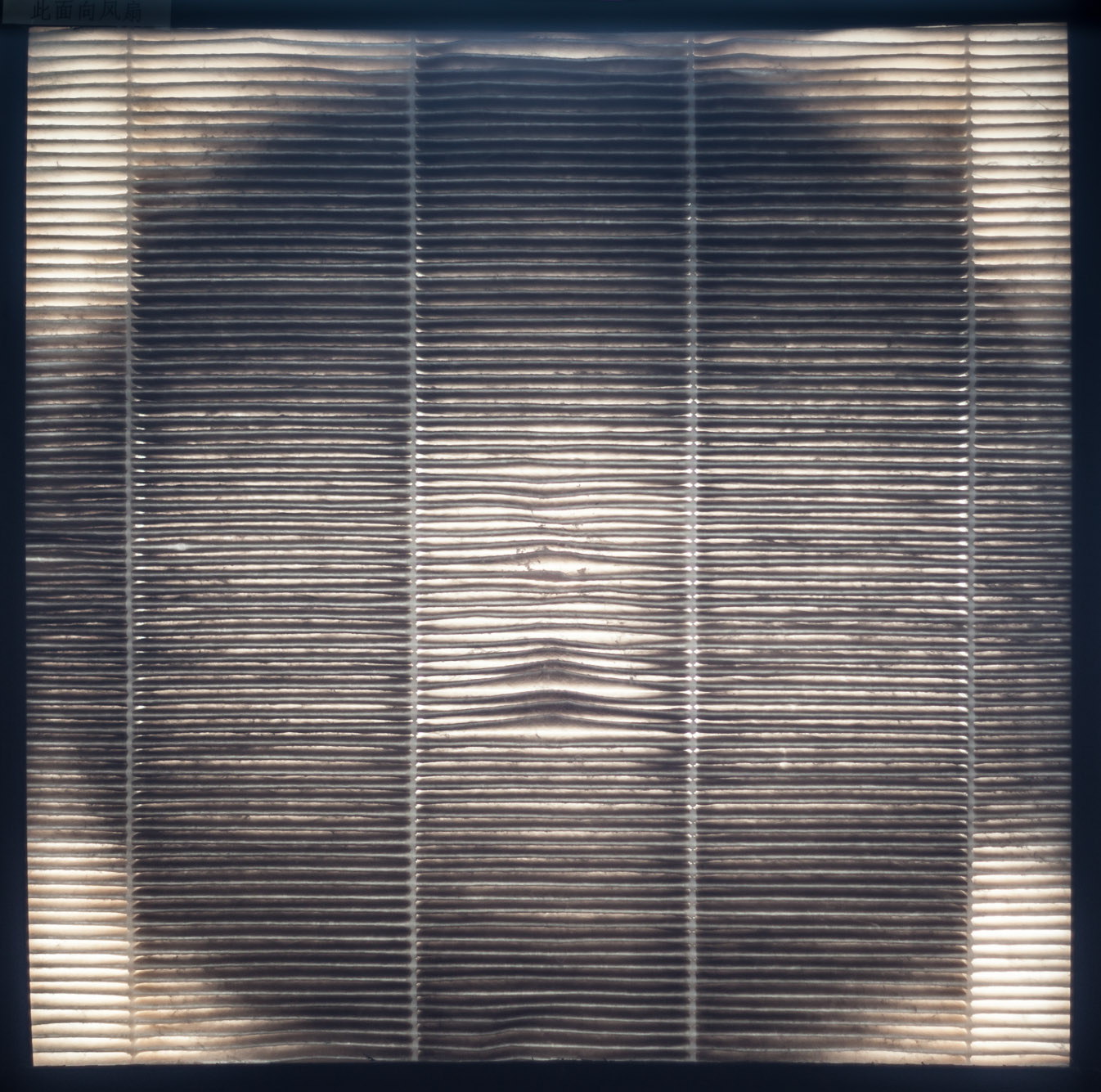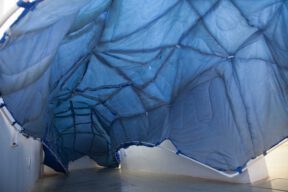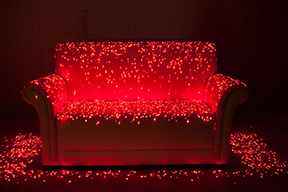Ausstellungen | 展览 | Exhibitions
2019
Not all who wander are lost: Paths into China | 浪人识途:在华之路 | Not all who wander are lost: Paths into China
23-10-2019
Not all who wander are lost: Paths into China 浪人识途:在华之路
Künstler·innen | 艺术家 | Artists: Hans Ahnert, Cui Guotai 崔国泰, Franz Dude, Silvia Robin Ederer, Frederik Foert, Olga Georgieva, Elke Graalfs, Guan Jingjing 关晶晶, Guo Yuanshu 郭苑舒, Olivier Hölzl, Daniil Kolchanov, Larissa Leverenz, Nie Shiwei 聂世伟, Bianca Regl, Gert Resinger, Shi Jiongwen 史泂文, Bartosz Sikorski, Stefanie Thiedig, Olga Vorobyrova, Anny Wass, Wang Ai 王艾, Xiao Wenjie 蕭文杰, Xu Hongxiang 许宏翔, Yang Jin 杨进
Kuration | 策展人 | Curation: Alexandra Grimmer 亚⼒山⼤格林姆
Verantwortlich | 负责人 | Responsible: Wang Jianwei 王建伟
Jigongshan International Art Museum, Henan 河南鸡公⼭国际艺术园区
In Collaboration with the Cultural Section of the Austrian Embassy in Beijing
Arnold Obermayr, Head of the Austrian Cultural Forum
Für weitere Informationen | 更多信息 | For further information:
– Kulturgut 文化财富, 2019-10: Am Rooster Mountain in Henan (Hintergrund | 河南鸡公⼭的背景 | Background to the Rooster Mountain in Henan: „Es war einmal ein amerikanischer Missionar, der sich im Sommer 1904 aus der Hitze Hankous auf den Weg nach etwas Abkühlung machte …“)
– U Can 优看, 2019-10: “毫不犹豫”,来自中国的灵感
2017
Jiebi 2017: Exhibition of Beijing Hutong Photography | “借壁”:2017当代摄影家镜头⾥的北京胡同联展
参展摄影师:沈延太、王坚、杨大洲、徐勇、海德光、白皓、贾勇、刘铮、张海佩、由甲(德)
学术顾问:鲍昆
策展顾问:⽩皓
展期:2017-6-24–7-2
主办⽅:⼀派胡同
协办⽅:胡同⽂化馆社区⻘年汇、史家胡同博物馆、27院⼉
从30后至90后,出生于不同年代的摄影家,数年拍摄的精品胡同作品联展
从上世纪80年代持续到现在,许多逝去的景观,重现在我们眼前
“借壁”2017当代摄影家镜头⾥的北京胡同摄影联展,旨在通过上世纪80年代,到本世纪20年代,多位摄影家拍摄的精品胡同作品,折射出古⽼都城北京在祖国迈向现代化的30年间的巨⼤变化,同时展现北京作为世界历史⽂化名城所拥有的深厚底蕴。
“借壁”,⼀堵墙的意思,北京话的⼉化⾳发⾳“接边⼉”“借⽐⼉”,⼲义泛指街坊邻居。⼀壁之隔, ⽐邻⽽居。胡同和四合院承载着厚重、鲜活的⼈⽂历史,是⽼北京⼈⽣活的真实写照。曾被视为北京⾎脉的胡同数量,由当初的近三千条,缩减为⼀千来条。北京胡同作为世界公认的⼈与空间环境共⽣的典范,是中国独特的⽂化现象和宝贵遗产。
本次参展的⼏代摄影⼈,年龄从30后到90后,他们都深爱⾃⼰的家园,并在各个特定时期专注胡同⽂化,以其独特视⾓诠释着胡同的魅⼒和精髓,为世⼈留下不可多得的珍贵影像。我们希望借助⽼北京⼈居环境中提炼出的影像精华,和⻘年⼀代⼈产⽣碰撞与互动。为此,我们还特意选取特定分展区,把场地放在胡同⾥既有的居住、⽣活或公共空间⾥去。让艺术重新回归⽣活,焕发活⼒,激活⼈与时代的脉搏。
Katalog: Privatdruck | 画册:私人印刷品 | Catalogue: Private print
Stefanie Thiedig 由甲
Hutong Shops: Open Stages at Night
Old Beijing inside the former city walls, which is now the 2nd ring road, is divided into Dong-, Xi- and Nancheng, in the Eastern, Western and Southern Districts. I have been living in Dongcheng since years and often walk through the Hutongs, especially enjoying strolls at night. I particularly like the Hutong shops, which draw one towards them like moths to the flame, it feels like they are pulling you into their ban. They appear to me as miniature stages in their own atmosphere of warm light inside the darkness of the alleys.
In photographic wanderings through the three districts, I time and again realize how different Nancheng is from the two Northern districts. Residents in the South are more proletarian and rough, the gaming places are more frequent and massage places more obviously placed next to one-hour-hotels. But also Dongcheng and Xicheng differ from each other, Dongcheng was traditionally for business, Xicheng for administration: 东富西贵南贫北贱. During Qing Dynasty, scholars and a few chosen ones with good will towards the Manchus were allowed to work and stay in the two Northern districts, whereas most Beijingers had to move to the Southern part. Nowadays, the South is still inhabited mostly by laobeijingren, while many waidiren live in the Northern spheres, overly polite within their tiny shop worlds.
It would be exaggerated to use these photo scenarios for introducing the inner districts of Beijing, but it might be a glimpse. Hopefully not completely to be turned into history, considering the present reconstructions taking place again right now.
The picture called “Wampenmann” or “Belly Guy” is named after the guy on the right side, where he is hanging out with friends in front of the store for tobacco and liquor. I photograph rather slowly, taking quite some time for compilation and adjustment. I position myself mostly in the background of a scene, but do not hide, so usually people are aware of me and sometimes a situation evolves out of it. Here, the drunkard started mumbling into my direction, asking me if I was still not ready, here, I give you something to look at, buahaha. Welcome to Nancheng.
In contrast to this stands the small family I portrayed in Dongcheng. Grandfather and father are left and right with the grandmother and the child in the middle. Initially, father and son were sitting there, when I asked if I could take a picture. They were such modest and kind people and let me have all the time I needed, until I realized that someone was waiting next to me. It was the grandmother, who did not want to disturb. I asked her to please come inside the picture, and she stepped forward, placing the child in the centre, illuminated underneath the light. Therefore, this picture is called “Holy Family”.
胡同小铺:露天舞台夜景
北京旧城墙内,即现在的二环被分为东城、西城和南城。我已经在东城生活多年,经常经过胡同,尤其喜欢夜晚在胡同里漫步。我特别喜欢胡同里的小铺,它们会让你着迷,飞蛾扑火般扑过去。在小巷黑暗中,它们如微型舞台的灯光,有着温暖的气氛。
带着相机在三个区内溜达,我一次又一次地意识南城与东城西城之间的区别。南方的居民更为无产阶级和粗犷,棋牌室较多,按摩店显然靠近一小时旅馆。而且东城和西城也不同,东城是传统的商业区,西城则是多官邸:东富西贵南贫北贱。在清代,学者和少数亲满族人是可以工作和居住在城内北部地区,而大多数人不得不搬到南部。今天,在南城居住的人大多数仍然是老北京人,而许多外地人虽然住在北半球但却仅限于他们的小店世界。
用这些照片场景来介绍北京的内环城区是有些夸张,但可能算惊鸿一瞥。考虑到目前的重建工作再次发生,希望这一瞥不会完全变成历史。
照片“Wampenmann”或“大腹大哥”得名于右边那个人,摄于一家烟酒店,当时他正和他的朋友们闲逛。我拍摄得相当慢,取景和调焦颇费了些时间。我把自己定位在一个场景的背景下,但不隐藏,所以通常人们意识到我有时所拍的内容自然演变出来的。在这张照片里,这个醉鬼嘟嘟囔囔地向我走来,问我是不是还没准备好了,来,我给你看点东西看看,哈儿哈儿哈儿。欢迎来到南城。
与此相反,我在东城描述了这个小家庭。祖父和父亲是左右祖母和孩子在中间。起初,当我问我是否可以拍照时,父亲和儿子坐在那里。他们非常谦逊和善良的,让我随意拍,后来我意识到有人在我旁边等着。那是奶奶,她不想打扰我。我请她进来,她走上前去,把孩子放在中间,在灯光正下方。因此,这幅画被称为为“神圣家庭”。
译文:曲一箴
Für weitere Informationen | 更多信息 | For further information:
– 推荐文化, 2017-6: 「借壁 2017」北京胡同影像联展即将在京举行
– Kulturgut 文化财富, 2017-7: Exhibition of Beijing Hutong Photography | 借壁:北京胡同影像联展
– Kulturgut 文化财富, 2013-10: Hutonglädenserie | 胡同中的小店 | Hutong Shops
2015–2017
Art Against Art | 艺术反对艺术 | Art Against Art
10-9–10-10-2015
Art Against Art – Second Round: Mirror 艺术反对艺术——第二回展:镜子
Six mirrors 六面镜子: Ma Ke 马轲, Zhu Xianwei 朱贤巍, Xu He 徐赫, Li Sa 李飒, Gu Quan 谷泉, Stefanie Thiedig 由甲
Distance Gallery 三远当代艺术中心
Jinwan Square #3, 1B-02 (right across the train station), Heping District, Tianjin
天津市和平区津湾广场3号楼1B-02(高铁火车站对面)
Synopse | 简介 | Synopsis
We discuss, we fight, we reflect or try to, we mostly don’t get to the point. We ask each other what this thing is, we are into, this Chinese contemporary art of 2015. There also will be art and a catalog.
我们讨论,我们争辩,我们反映或试图反映,但通常我们不得要领。我们互问,这个我们置身其中的2015中国当代艺术是什么。这里将会有艺术,还有画册。
Katalog: Privatdruck | 画册:私人印刷品 | Catalogue: Private print
Für weitere Informationen | 更多信息 | For further information:
– Kulturgut 文化财富, 2015-8: Ankündigung | 通知 | Announcement
– Distance Gallery 三远当代艺术中心, 2019-9: Eröffnungsgespräch | 反对,更多意味着包容 | Opening talk
– 库艺术, 2015-9: Art Against Art: 30 Fragen | 艺术反对艺术:30个问题 | Art Against Art: 30 questions
10-12-2016–10-1-2017
Art Against Art: Ancestry 艺术反对艺术——出身
Künstler·innen | 艺术家 | Artists: Ma Ke 马轲, Li Sa 李飒, Gu Quan 谷泉, Chen Heng 陈恒, Xu He 徐赫, Stefanie Thiedig 由甲, Zhu Xianwei 朱贤巍
Lan Space 兰空间
Zuiku lnternational Cultural Park of Caochangdi, Airport Service Road Chaoyang District, A5
北京市朝阳区崔各庄乡草场地甲8号醉库国际文化创意园·A5
Synopse | 简介 | Synopsis
The meaning contained in “Ancestry” has to do with where we come from culturally. “Ancestry” is a kind of thread. The purpose of combing it out is to figure out where we are headed. This concept refers implicitly to the bloodshed of the class struggle. As long as humanity exists, there is always the need for re-allocating resources. Identity is an important condition in this. It’s an undisputed politics. “Ancestry” is a product of political dictatorship. It represents a social order. To oppose it would be to defy the social order. In a former extreme era, people paid with their lives for opposition against “Ancestry”.
People of our generation have experienced 30 years of drastic changes. Sometimes the mind is already racing on the high-speed train, while the body is pulling at the roots of “descent”. Of course there will be puzzlement, and there will be obstacles. They don’t have a good solution, but the contradictions that take effect on the body aren’t necessarily always a bad thing. It could produce a kind of force, like a bow stretched to the limit!
“出身”是一条线索,梳理的目的,是为了弄清我们要去哪儿。这个概念隐含着阶级斗争的腥风血雨。只要人类存在,就需要重新配置资源。身份是其中重要条件,是毋庸置疑的政治。它代表一种社会秩序,反对他就是挑战社会秩序。在一个极端的时代,“反出身”会付出生命的代价。
他们这一代人正好经历了30年的剧烈变化,有时候思想己经坐在高铁上,身体却在和“出身”的根拉扯,当然会有困惑,会有障碍。他们没有很好的办法去解,但是作用在身上的矛盾,有时候也未偿不是好事,它没准会产生一种力,像拉满的一张弓!
Für weitere Informationen | 更多信息 | For further information:
– Sohu 搜狐, 2016-12: “艺术反对艺术—出身”群展在草场地兰空间开幕
– Kulturgut 文化财富, 2017-3: BJ und GZ: Kunstschau im Winter 2016/7
2016
China Drifters | 华漂 | China Drifters
23–25-12-2016
Art Expo Guangzhou 城市双年艺术展
China Drifters: Group Exhibition of German Artists 华漂:德国艺术家联展
Künstler·innen | 艺术家 | Artists: Ole Aselmann 吴勒, Alice Dittmar, Frederik Foert 福尔康, Julia Hofmann 何悠丽, Stefanie Thiedig 由甲
Kuration | 策展人 | Curation: Hao Xiaoman 郝晓曼
Art Expo Guangzhou 2016 城市双年艺术展
广州琶洲南丰国际会展中心首层L1厅
China Drifters
Von Deutschland nach China: Als Kunst- und Kulturschaffende sind wir seit Jahren entweder in China sesshaft oder regelmäßig hierher Treibende. Fünf Freunde, fünf Farben, fünf Elemente. Wir sind aus allen Ecken Deutschlands Zugereiste – in unserer Erschaffung von Kunst und Kultur ist der chinesische Einfluss oft eng mit der europäischen Sichtweise verzahnt.
Der Titel „China Drifters 华漂“, huapiao, ist eine Kurzform der Abwandlung von 北漂/北京漂流, beipiao, Beijing piaoliu, nach Beijing driften. Der Ausdruck wurde vor über zehn Jahren von Beijingern geprägt für all diejenigen, die es von überall her nach Beijing zieht, die beipiao 北漂, die Beijing Vagabunden oder Drifter. Im größeren Sinne und für Guangzhou sind wir: die huapiao, die China Drifter.
华漂
从德国到中国:作为艺术与文化创作者,我们中的有些已经在北京安居十几年,有些多年以来频繁穿梭于两国之间。五位朋友,五种色彩,五行元素。我们从德国各个角落远道而来。在我们的作品中,中国的影响和欧洲的视角互相渗透。
“华漂”的名称改自“北漂”/“北京漂流”。该表述概括了全国各地漂去北京生活的人,是十几年前北京本地人对这一群体的称呼。对于广州而言,从广义上讲,我们是”华漂一族“。
Für weitere Informationen | 更多信息 | For further information:
– Art Expo Guangzhou 城市双年艺术展, 2016-12: Art Expo Guangzhou 2016 城市双年艺术展
– Rezension, 2017-1: Holm Friede: Ich habe die Zukunft besucht, sie liegt in China, in: Welt, 2017-1-14
– Qiao Shiguang Museum 乔十光美术馆, 2017-2: “对话:中德艺术交流展”在乔十光美术馆开幕
– Kulturgut 文化财富, 2017-3: BJ und GZ: Kunstschau im Winter 2016/7 (im Beitrag ganz unten | 在底部的文本中 | in the post at the bottom)
2014–2016–2020
Weg zu Hanshan | 寒山道 | Way to Hanshan
2014-6
Reiseprojekt in Zhejiang zwischen Diskurs, Erfahrung und Kreation | 浙江的旅行项目,在思、体验和创意之间 | Travel project in Zhejiang between discourse, experience and creation
Hanshan | 寒山 | Hanshan
Hanshan, Kalter Berg, ist ein Ort im Tiantai-Gebirge der Provinz Zhejiang, nach dem sich ein sonst unbekannter Dichter-Einsiedler benannt hat. Dort lebte er im 7. Jahrhundert in einer Höhle und ritzte seine Verse ins Gestein und in die Bäume. Hanshan wurde durch die Übertragung von Gary Snyder als Beitrag zur Beat-Generation der 1950er Jahre wiederentdeckt – und fand erst in den letzten Jahren über Japan erneut seinen Weg nach China. Seine Ideale zen-buddhistischer Weltauffassung und umgangssprachlich ironischer Verballhornung gesellschaftlicher Mechanismen lassen mich nicht in den Bergen und ohne jeglichen Besitz leben wollen, aber sie ziehen mich an – in ein Pendeln zwischen meinem Leben im Roten Staub und dem Eintauchen in die Nebelschwaden von waldiger Landschaft.
寒山位于浙江省天台山的寒岩,一位本不知名的诗人遁世与此,并以此山为自己命名。隋末唐初,他居于洞穴中,将诗行刻在岩壁和树干上;二十世纪五十年代,通过加里·斯耐德的翻译,寒山诗受到“垮掉的一代”的推崇,被重新发现。在日本学者的推介下,近年来才再度在中国引起关注。他秉持理想的禅宗的世界观,以白话的表达方式讥讽社会体制。他的诗句并未让我放弃所有去追求山居生活,但着实令我神往——摇摆在滚滚红尘中的世俗生活和森林渺渺雾气中的隐居生活之间。
Hanshan, Cold Mountain, is an area in the valley of Tiantai mountains in Zhejiang province, after which an otherwise unknown hermit-poet named himself. He lived there in the 7th century in a cave, where he carved his verse into the rocks and the trees nearby. Hanshan was rediscovered through the translation of Gary Snyder as contribution to the Beat generation in the 1950s – and only found his way back to China in recent years via Japan. Hanshan’s ideals of Zen-Buddhist world comprehension and his vernacular ironic malapropism of social mechanisms do not make me want to live without any possessions in the mountains, but they allure me as a pendulum between my life in the Red Dust and the immersion in the waft of mist of forested landscapes.
Landschaften | 风景 | Landscapes
Es braucht Zeit, um in eine Landschaft hineinzugelangen, eine Anreise von einem oder zehn Tagen, ein Einlassen, bis man einen Weg gefunden hat. Diesen begeht man im chinesischen Raumverständnis anders als im westlichen. Im westlichen gibt es traditionell einen an Fluchtpunkten ausgerichteten Horizont, auch hier kann man hineingehen, aber meistens bewegen sich die Elemente auf einen zu. Die chinesische Landschaftsperspektive ist nicht linear, sondern multipel in Höhe, Tiefe und Weite. Zunächst lässt man den Blick auf der Suche nach einem Einstieg schweifen, um sich dann hineinzubegeben und dort zu wandeln. Man kann sich beliebig niederlassen, bei Gefallen eine Zeit verweilen und seinen Gedanken freien Lauf lassen. Es geht mehr um die Vorstellung des Raumkontinuums in seinem Kontext.
若想真正抵达一片风景,需要花费时间,一段一天或者十天的旅程,被接纳,直到找到一条路。中国对于空间的理解异于西方。在西方传统中,消失点位于地平线上,在这里也可以进入,但通常情况下,所有元素都指向观者。中国山水画的视角并不是线性的,而是讲究高远、深远和平远的多重视角。首先,用眼睛寻觅到一个入口,而后去到那里,开始漫步。可以随心所欲地停下来,逗留片刻,让思想自由驰骋。一切更关乎自身语境中空间连续性的观念。
It takes time to get into a landscape, an arrival of one or ten days, a sinking in until one has found a way. The walk differs in the Chinese and Western comprehension of space. It is traditionally aligned with vanishing points on the horizon in the Western sense, which one may also walk into, but where the elements mostly move out of towards oneself. The perspective of Chinese landscapes is not linear, but multiple in height, depth and level. One first let’s the eyes wander in search for an entry, for then to get in and stroll around. One may at any order settle somewhere, rest a while where it pleases and lets the mind drift freely. It is more about perception of spatial continuum in it’s context.
Leere | 空 | Void
In der Landschaft dann kann der Kontext vergessen werden. Einer der besten Gehilfen ist der Nebel. Nicht als leere Fläche, eher als Diffusion vom einen Hier zu einem anderen. Das Kong, die Leere, dient als Medium für diesen Übergang. Mit dem Hineinbegeben ist der Anfang getan, im Loslassen kann man sich hineinsaugen lassen. Wohin, was, wie, fragt die Ratio – und schon ist man wieder draußen. Zwischen Sein und Nichtsein tauche man erneut ein, um durch das Kong den Fokus auf einzelne Stränge des Gesamtwirrwarrs zu richten. Offen im Ausgang und als Suche angelegt, vermag sich der Nebel vielleicht zu lichten und die im Äther schwirrenden Ideen aufzugreifen. Noch mögen sie in Warteposition verfallen wirken und entwickeln doch bei längerem Hinsehen ein Eigenleben.
身处风景中,就可以忘掉语境。最好的协助之一就是雾。雾并不就是空旷,而是从一个到另一个区域的过度。空,是服务于这种过度的媒介。随着进入,开始已定,心无旁骛,便可完全融入其中。去向哪里?什么?怎样?理智在质问——又重新置身其外了。重新沉浮在“有”和“无”之间,试图透过“空”,去将焦点投射到一团乱麻中的丝丝缕缕上。出路未知,在探寻中,眼前的云海层层散开,满空中飘浮的想法即会显现,伸手便可捕捉到。它们看似在静默地等待着,然而持续近观之,就会发现,却都独善其身地存在着。
The context may then be forgotten when inside the landscape. One of the best assistants is the mist. Not as empty surface, rather as diffusion from the one here to the other. Kong, the void, serves as medium for this transition. With merging in it, the initial is set to let go, to get absorbed into it. Where to, what, how, asks rationality – and one again is outside. Between being and not being one dives in anew, though to focus through Kong on particular strings of the whole muddle around. Open in departure and applied as a search, nebula might lift up and the ideas whirling in the ether can be grasped. They could still appear as dwelling in a waiting position, but develop on closer inspection an independent existence.
Text | 文 | Text: Stefanie Thiedig 由甲
Übersetzung | 中文译文 | Translation: Wang Pan 王盼
Englische Korrektur | 英文编辑 | English edit: Lui Chen 陈路
2016-2
Stefanie Thiedig 由甲: While Waiting 在等待
28-2–22-4-2016
Zarah
Guloudong dajie 46, Dongcheng District, Beijing 北京市东城区鼓楼东大街46号
Synopse | 简介 | Synopsis
Being in waiting is a condition that appears to be coming back to me. I am usually dismissing it through walking. And then I often take pictures. There are lots of waiting-ways. These pictures could not come out before. But now they are ready. No more waiting for an exhibition!
For the first time not just on my or your computer, but put into materiality. With this choice of pictures opening here, it is a walking into the color of green. Showing you them in winter … all color is gone outside right now, inside we have concrete walls and wooden furniture, not a bad surrounding for my Green Landscapes-walking, I think.
There is no message coming out, instead it is an invitation to come in. Please do come in and wonder around. If you would like to have some theoretical background, I wrote a few passages in our leaflet, also to be found here below – about Hanshan, landscape and void, about walking into them, about nebulae.
在等待中似乎是一种回归我自身的状态。我经常是通过漫步行走的方式去解除这种状态。同时在这个过程中进行拍摄。有很多种等待的方式。这些照片在此之前是不可能出来的。但现在他们多已经成行了。不再需要等待去做一个展览!
第一次不只是在我或你的电脑中去欣赏他们,而是以实物的形式将他们呈现出来。通过今晚所选出这些图片的展现,将带各位在潜入空茫的绿色中漫步行走。在冬天向你们去展现它们……现在外面全部的颜色都失去了色彩,而在里面我们周围这些水泥的墙壁和木制家具座椅,我认为在这样的环境中很适合我的绿色风景中漫步。
在这里没有信息要去向你表达传递,相反,这是一个要身临其境去感受的邀请。请大家都走进来去感受它。如果你想去了解一些背后的理论信息,我也在图册中写了相关的介绍。关于寒山、风景、以及空茫。关于去步入它们,关于蒙雾。
译文:解开缙
Für weitere Informationen | 更多信息 | For further information:
– Kulturgut 文化财富, 2016-3: Ankündigung | 通知 | Announcement
2016-10
In Nebula 入雾: Ausstellung zwischen Foto und Malerei 摄影与水墨联展
Malerei | 水墨 | Painting: Zhu Jianzhong 朱建忠
Fotografie | 摄影 | Photography: Stefanie Thiedig 由甲
1–15-10-2016
Mit Künstler·innengespräch | 艺术论坛 | With artist talk
Bücherei Hangzhou, Ausstellungshalle 杭州图书馆展厅
Jiefang donglu 58, Jianggan District, Hangzhou 杭州市江干区解放东路58号
Veranstalter | 主办 | Organiser: Goethe-Institut (China) 歌德学院(中国), Bücherhalle Hangzhou 杭州图书馆
Synopse | 简介 | Synopsis
In den Nebel, in die Berge, in den Wald, in die Natur. Die Fotografien von Stefanie Thiedig wirken beinahe wie gemalt – und wollen in dieser Ausstellung mit den traditionellen chinesischen Landschaftsbildern von Zhu Jianzhong ins Gespräch treten.
Im westlichen Raumverständnis gibt es traditionell einen an Fluchtpunkten ausgerichteten Horizont, auch hier kann man hineingehen, aber meistens bewegen sich die Elemente auf einen zu. Die chinesische Landschaftsperspektive ist nicht linear, sondern multipel in Höhe, Tiefe und Weite. Zunächst lässt man den Blick auf der Suche nach einem Einstieg schweifen, um sich dann hineinzubegeben und dort zu wandeln. Man kann sich beliebig niederlassen, bei Gefallen eine Zeit verweilen und seinen Gedanken freien Lauf lassen.
Der Nebel in Zhu Jianzhongs Bildern scheint aus den Bäumen zu entstehen, während er bei Stefanie Thiedig den Bergen entstammt?
Kong, … kongfang: Die Leere, … leeres Haus, so wörtlich übersetzt. Bei Stefanie Thiedig sind es Gerüstskelette aus Beton, die als eine der wenigen menschlichen Andeutungen wiederkehren. Sie bilden das Pendeln zwischen dem Leben im Roten Staub und dem Eintauchen und Aufgesogen werden in die Nebelschwaden von waldiger Landschaft. Umgekehrt scheint Zhu Jianzhong ein Hin und Her nicht zu benötigen. Fragil wie die Bäume, leben seine Pagoden zeitlos in seinen Landschaften.
Nachtlandschaften – es herrscht Uneinigkeit darüber, ob das Nichts, das Kong, schwarz oder weiß ist. Sowohl bei Zhu Jianzhong als auch bei Stefanie Thiedig kann es auch einmal blau sein. Generell aber überwiegen bei beiden die dunkleren Töne. Soweit gar, dass sie gelegentlich in die Nacht eintreten.
入雾、进入山中、深入密林、浸入大自然。由甲的摄影看起来似以画笔描绘而成,在此次展览中,她的影像作品将与朱建忠的中国传统山水画进行对话。
在西方对空间理解的传统中,消失点位于地平线上,在这里也可以进入,但通常情况下,所有元素都指向观者。中国山水画的视角并不是线性的,而是讲究高远、深远和平远的多重视角。首先,用眼睛寻觅到一个入口,而后去到那里,开始漫步。可以随心所欲地停下来,逗留片刻,让思想自由驰骋。一切更关乎自身语境中空间连续性的观念。
在朱建忠的绘画中,雾似乎从树木中衍生而出;而在由甲的影像中,雾却源自群山?
空房:在由甲的摄影作品中,钢筋混凝土结构,是少数反复出现的的人类迹象之一。这样便产生了在滚滚红尘中的世俗生活和森林渺渺雾气中的隐居生活之间的摇摆。反之,对于朱建忠来说,这种往复似乎并不需要。柔弱如树木,他的小塔却在他的山水中不朽。
黑夜山川——虚无,空,应是黑色还是白色?关于此,人们各执己见。在朱建忠和由甲的作品中,它间或也可以是蓝色。但总体看来,两人都更倾向深色色调。偶尔,他们也会在作品中潜入黑夜。
Text | 文 | Text: Stefanie Thiedig 由甲
Übersetzung | 中文译文 | Translation: Wang Pan 王盼
Grafik | 设计 | Graphic design: Julia Hofmann 何悠丽
Für weitere Informationen | 更多信息 | For further information:
– Goethe-Institut (China) 北京德国文化中心歌德学院, 2016-9: In Nebula: Ausstellung zwischen Foto und Malerei 小长假在杭州看展:摄影水墨联展「入雾 」
– Kulturgut 文化财富, 2016-10: Ankündigung | 通知 | Announcement
– Kulturgut 文化财富, 2016-10: Arbeiten | 作品 | Works
2016–2020
Void Lands | 空境 | Void Lands
Collaborative project between Alice Dittmar and Stefanie Thiedig
Synopse | 简介 | Synopsis
Aus dem Dazwischen von Stadt und Land und von Deutschland und China wollen wir uns einen Weg in die Leere erarbeiten. Wir befinden uns in einem Schwebezustand, der uns an Boden gewinnen lässt. Wir sind hier und dort, der Zeitraffer der Überbrückung versetzt uns aus dem verkopften Metropolentrubel hinaus in die Vorstellungen von Wald und Berg. Nebel zieht auf, wir suchen ihn, um einzutauchen, um loszulassen, um zu sehen, was sich in ihm verbirgt, um es dann einzufangen mit Linse und Stift, mit den Ideen der Alten aus unserer heutigen Sicht.
走出城市与自然之间,走出德国与中国之间,我们想要寻找一条空道。我们处于悬浮状态,力图着地。我们有时在此处,有时在彼处。将时间快进,我 们弹指之间从煞费脑力的城市喧嚣来到想象中的山林。雾散了,我们去找寻它。我们投入渺渺雾气中,放空意念,去发现雾中的景象,再用镜头和笔, 凭借古人的理念,站在今人的立场去捕捉它。
From the in-between space of city and country, and Germany and China, we seek a way into the void. We find ourselves in a disposition of uncertainty from which we gain ground. We are here and there … the bridging of this time-lapse transposing us beyond the hustle and bustle of cities to notions of forest and mountain. Mist sets in; we seek it so as to immerse and release what it conceals, and then capture it via lens and pen, with thoughts of the ancients from today’s perspective.
Für weitere Informationen | 更多信息 | For further information:
– Alice Dittmar, 2016–2020: Void Lands | 空境 | Void Lands
2015–2016
Painting meets Music | 绘画相遇音乐 | Painting meets Music
2015-9
Painting meets Music | 绘画相遇音乐 | Painting meets Music
DJs | DJ们 | DJs: Huang Weiwei 黄维伟, X.L.F, Zhang Lin 张林, liolio, 1van Binary 伊万
Künstler·innen | 艺术家 | Artists: Ole Aselmann, Chen Heng 陈恒, Ci Yishu 慈宜书, Ding Wei 丁炜, Alice Dittmar, Gan Dige 甘迪格, Ge Hui 葛辉, He Wei 何伟, Hu Zongzhu 胡宗竹, Jia Bei 家北, Li Sa 李飒, Li Zifeng 李子沣, Liu Fei 刘飞, Lü Song 吕松, Lazar Lyutakov, Ma Ke 马轲, Meng Baishen 孟柏伸, Bianca Regl, Misha Stroj, Sun Rongfang 孙蓉芳, Sun Xiuting 孙秀庭, Wu Shengzhi 吴升知, Xi Danni 席丹妮, Xu He 徐赫, Xu Hui 许惠, Yang Xinjia 杨欣嘉, Zhai Liang 翟倞, Zhang Fangbai 张方白, Zhang Junling 张俊领, Zhang Xinjun 张新军, Zhang Ying 张颖, Zhao Jingdai 赵晶岱, Zhao Longping 赵龙平, Zhu Xianwei 朱贤巍
Kuration | 策展人 | Curation: Stefanie Thiedig 由甲
Konzept | 方案 | Concept: Huang Weiwei 黄维伟, Stefanie Thiedig 由甲
Unterstützung | 支持 | Support: Huir 卉儿, Alex Signer 夏乐
Design | 设计 | Design: Julia Hofmann 小悠
5-9-2015
Zarah
Guloudong dajie 46, Dongcheng District, Beijing 北京市东城区鼓楼东大街46号
Synopse | 简介 | Synopsis
In Beijing’s heat of the summer, we like to organize a little something playful and relaxing among friends. This summer, we used one day and one night trying to combine painting and DJing. We exhibited paintings at Zarah all day and night, and at the beginning of sunset, the DJs interpreted them with their music. Everyone was welcome to join us in seeing and hearing how to communicate this way …
我们在每年的夏天都做一点好玩儿的、放松的、瓷器的事情。 这个夏天我们想用一个白天和一个晚上的时间把绘画和音乐联系在一块儿。我们将在Zarah展览艺术家的作品,日落时DJ们开始通译绘画到他们的音乐里。请与我们一起观看展览和倾听DJ们是怎么利用DJSet把这些绘画串联并用音乐与之对话!看看这个方式是否可以让音乐与绘画交流起来……我们自己也很期待会是一种什么样的气氛状态……“瓷器”一直在你身边!
Für weitere Informationen | 更多信息 | For further information:
– Kulturgut 文化财富, 2015-8: Ankündigung und alle Ausstellungswerke | 通知和全部的画品 | Announcement and all exhibition works
– Zarah Music: Sounds | 音乐 | Sounds
– Nachklang | 反响 | Lingering sound, 2015-9: For an art journey’s participants we took the theme to an artist’s studio in Heiqiao, set up the paintings and turntables there, brought food and drinks for a summer’s afternoon.
2016-1
Painting meets Music #2 | 绘画相遇音乐之二 | Painting meets Music #2
Zweite Runde im Künstlerstudio | 第二回在艺术家的画室 | Second round at artist’s studio
DJs: Huang Weiwei 黄维伟, Zhang Lin 张林
Maler | 画家 | Painters: Ma Ke 马轲, Zhu Xianwei 朱贤巍
Kuration | 策展人 | Curation: Stefanie Thiedig 由甲
Übersetzung | 译文 | Translation: Wang Pan 王盼
Synopse | 简介 | Synopsis
Painting meets Music startete im September 2015 in Beijing. Dort stellten wir einen Tag und eine Nacht lang von 34 Künstler·innen jeweils 1 Bild aus – mit Beginn der Abenddämmerung interpretierten 5 DJs sie mit ihrer Musik. Bei diesem ersten Ansatz waren die Bilder fertig, wurden an einem Ort zusammengebracht und die Sounds kamen neu hinzu. Es war ein erfrischendes Spektakel und beide Künstler·innengruppen erlebten ein Neuverständnis ihrer Arbeiten.
Wir wollten mehr, wir wollten gegenseitige Einflussnahme. Für eine Aktion in Gleichzeitigkeit starteten wir Painting meets Music #2 in einem Atelier. Can you hear the colour?
Zwei DJs aus Beijing treffen auf zwei Maler. Alle vier sind gerüstet mit ihrem jeweiligen Equipment – vom DJ-Pult aus bewegen sich die Soundvibes in den Raum, von den Leinwänden aus schwingt ihnen die Farbe entgegen. Wir befinden uns in einer Interaktion zwischen Musik und Malerei. Das Ergebnis ist offen, heraus kommen eineinhalb Stunden elektronische Soundbites und zwei oder vier bis fünf Bilder, deren Farbe und Klang auseinander entstanden sind.
短片回放:绘画相遇音乐于2015年9月在北京启动。34名艺术家在一个白天和一个晚上的时间里每人输出一副作品-5名DJ在傍晚黄昏之时用他们的音乐来进行阐释。在这绘画相遇音乐的第一章节中,绘画作品是在完成后被汇集在一处,音效再被追加融入进去的。这是一场让人耳目一新的视听风暴,两组艺术家都在其中经历了对他们作品的一种全新的理解领悟。
我们想要的更多,我们想要相互影响力。因此同步行动,我们开启绘画相遇音乐之二在某间工作室。你能听到颜色吗?
两名来自北京的DJ相遇两位中国画家。全部四位都配备了他们相应的设备——声音共鸣从DJ台传至室内四处,颜色从画布中跃跃欲出。我们在音乐和绘画之间相互作用,使两者联系起来。其结果是开放未知的,颜色和音调被相互分离创作出约一个半小时的电子乐和两幅或四到五幅绘画作品。
Für weitere Informationen | 更多信息 | For further information:
– Zarah Music, 2015-12: Sounds in Ma Kes Heiqiao-Studio | 黑桥马轲画室的音乐 | Sounds at Ma Ke’s Heiqiao Studio
2014–2015
Out of the Fence – Connected in Parallel | 护栏——并联 | Out of the Fence – Connected in Parallel
Künstler | 艺术家 | Artists:
Zhang Xinjun 张新军 (*1983 Zhengzhou/ Henan 河南郑州)
Zhai Liang 翟倞 (*1983 Houma/ Shanxi 山西侯马)
He Jian 何健 (*1980 Beijing 北京)
Kuration | 策展人 | Curation: Stefanie Thiedig 由甲
Ausstellung in Beijing | 北京展览 | Exhibition in Beijing
30-11–7-12-2014
Mit Künstlergespräch | 艺术论坛 | With artist talk
Institute for Provocation 激发研究所: Black Sesame Space 芝麻空间
Heizhima Hutong 13, Dongcheng District, Beijing 北京市东城区黑芝麻胡同13号
Unterstützt von | 赞助北京 | With support of: Goethe-Institut (China) 歌德学院(中国)
Ausstellung in Düsseldorf | 杜塞尔多夫展览 | Exhibition in Düsseldorf
16-1–3-3-2015
Galerie Philine Cremer
Ackerstraße 23, Düsseldorf
Synopse | 简介 | Synopsis
Out of the Fence –
In order to order population, fences are showing up massively on the streets and sideways of Beijing. It appears almost lunatic. Lunacy of constructing of structuring of regulating. Navigating the masses. Are we inside or outside the zoo gates?
Representing an enclosure of a piece of land in the West, fences in China regulate the masses and guide the people. Crowd coping seems only necessary in exceptional cases in the West – it is the daily card in China. Are fences restraints, borders, barriers? Do they offer security or seclusion or confrontation, are they possibly conquerable? How do we live inside them?
– Connected in Parallel
How do we find, create and use the personal space inside the given and limited aisles? Our three artists are guided by all kind of fences on their ways, but they are also connected by fences and at the same time divided – connected in parallel. Inside these fences, they have their personal on and off buttons, with which they can switch and witch how they like. In this exhibition they are showing us their own paths …
护栏——
北京的街头巷尾,无论是人行道上还是马路上,到处竖立着分离和引导人群用的护栏!护栏从功能上等同于警示。警示有很多种,有建筑工地的警示、秩序警示以及对人群的控制。我们身在何处,是在动物园的栅栏以内还是以外呢?
西方的区域秩序的维护到了中国变成了对人群的引导和控制。在西方,通常只用于特殊场合的一种对群众的控制,到了中国,变成了家常便饭。护栏、强制和界限意味着障碍吗?护栏、强制和界限会给我们带来安全吗、还是会导致隔绝甚至是反抗?人们可以克服护栏吗?我们怎么生活在充满护栏的一个世界里?
——并联
这里涉及到的问题是,在业已存在并标明的路径中创造属于个人的自由空间并让它为自己服务。三位参展艺术家分别走着自己的路,这些路被充满各种可能性的护栏引导着伸向远方,他们三人彼此由护栏联系在一起,却又同时处于分离的状态。在这些围栏的范围内,他们依靠自己的开关,主动地决定自己与外部世界建立或中止联系。
Für weitere Informationen | 更多信息 | For further information:
– Kulturgut 文化财富, 2014-11: Beijing: Ankündigung | 通知 | Announcement
– Kulturgut 文化财富, 2015-1: Düsseldorf: Ankündigung | 通知 | Announcement
– Kulturgut 文化财富, 2014-11: Über Zäune und hulans 护栏
2014
Gedanken über Freiheit | 关于自由的思考 | Thoughts About Freedom
Mit Werken von | 有以下作品 | With works by: Anna Meisenberg, Bettina Gruber, Gao Hao 高昊, Jiny Lan 蓝镜, Katja Stuke, Levan Svanishvili, Li Ting 李廷, Li Xue 李雪, Manfred Engeser, Nicola Richter, Oliver Scheibler, Philip Wiehagen, Rolf Sachs, Sun Shi 孙诗, Tim Sandow, Wang Shuai 王帅, Wang Xiao Jie 王小杰, Weegee, Yang Di 杨迪, Zhao Xin 赵欣
Gastkuration | 特邀策展人 | Guest curation: Julian Sander, Stefanie Thiedig
Kuration | 策展人 | Curation: Li Xue 李雪, Martin Rendel
16-11-2014
K29
Kronenstrasse 29, Düsseldorf
4 Tage Beijing
Luftgefertigt und signiert vom 6. bis 9. Oktober 2014 von Beijing, kuratiert von der Stadt Beijing und der Autoindustrie und den Fabriken im Umland und, wie Beijingkader mutmaßen und eilends Verbote ausstellen, von den Straßenverkäufern von Lammfleischspießchen. Größe: 300×300 mm. Preis: 1.000.000 RMB oder ein paar Jahre Lebenszeit oder 15 RMB für einen Neukauf oder eine Immobilie an der Ostsee. Neuanfertigung aller Voraussicht nach jederzeit möglich.
In der Nacht auf den 10. Oktober 2014 wurde es vermutlich auch den Herren und der halben Anstandsdame im Regierungsbezirk Zhongnanhai zu trübe. Obwohl sie sich, so die Legende, eine Kuppel haben bauen lassen mit auf der einen Seite zehntausend Luftreinigungsfiltern des synonym zu verstehenden intelligent-kapitalistischen Wunderproduktes Chemisober der Schweizer IQAir AG, Stückpreis 19.700 RMB, und auf der anderen Seite mit ebenfalls zehntausend (diese Zahl steht in China traditionell für Unendlichkeit, was soll man machen), mit den mit Designpreisen ausgezeichneten Blueairs des schwedischen Herstellers Torana, Stückpreis 12.980 RMB – noch ist ins Gassengeflüster nicht vorgedrungen, welcher Seite es besser geht. Trotz also dieser Kuppel scheint einer der wichtigeren Elitären das Bedürfnis verspürt zu haben, den Halbmond zum Reisschnaps sichten zu wollen. Wozu hat man Macht und Telefone in seinen Händen. Flugs wurden die riesigen, unter der zur Geheimhaltung aufs äußerste verpflichteten unsichtbaren Spezialeinheit bewachten Windmaschinen angeschmissen. Gegen drei Uhr nachts schepperten die Fensterrahmen, morgens waren die Smogschmerzen vergessen. Wer braucht Freiheit, wenn er atmen kann?
Das Ganze hielt nur zwei Tage an, aber während APEC labten wir uns dem Ausland gegenüber gesichtswahrend wie selbstverständlich an ausschließlich blauen Tagen.
Aufgesammelt von Stefanie Thiedig, die Goldenen Acht der Marke Zhongnanhai rauchend.
四天的北京
由北京2014年10月6号到9号的空气制作完成并署名,由北京这座城市、汽车工业、周边工厂以及被相关部门颁布禁令的街边烤串儿小贩们联合策展。大小:300×300毫米。价格:100万人民币,或者若干年寿命,或者15元买一个新的滤片,或者波罗的海海边的一处房产。预计新的复制品随时可以获得。
2014年10月10号晚上,估计中南海里的官员和半数女眷也觉得天空有些太过阴霾。虽然,如传说的那样,他们建造了一道屋脊,在其一侧安装了一万台智能的资本主义的神奇产品——瑞士IQAir公司生产的空气净化器,每台耗资19700人民币,另一侧,同样安装了一万台(没办法,这个数字在中国传统中意味着不朽)瑞典公司Torana荣获设计大奖的Blueair,每台12980人民币——人们议论纷纷,尚未理出个究竟,到底哪边更好一些。虽然有了这道屋脊,但似乎还是不够,比如当某位重要的精英在几杯白酒下肚后萌生了观赏半轮明月的雅兴的时候。而且刚好,他的手上有权力和电话。分秒必争,那些由秘密特别行动队严密守护的巨型鼓风机被即刻启动。近午夜3点,窗框啪嗒啪嗒作响,到了早上,雾霾的痛被忘却。若能畅快呼吸,谁还需要自由?
这样带来的好空气只能维持两天,但APEC会议期间,为了给北京在外国面前留存颜面,我们也得以享受几天这绝无仅有的蓝天。
抽中南海彩八的由甲收藏
译文:王盼
Für weitere Informationen | 更多信息 | For further information:
– Kulturgut 文化财富, 2014-11: Ankündigung | 通知 | Announcement

